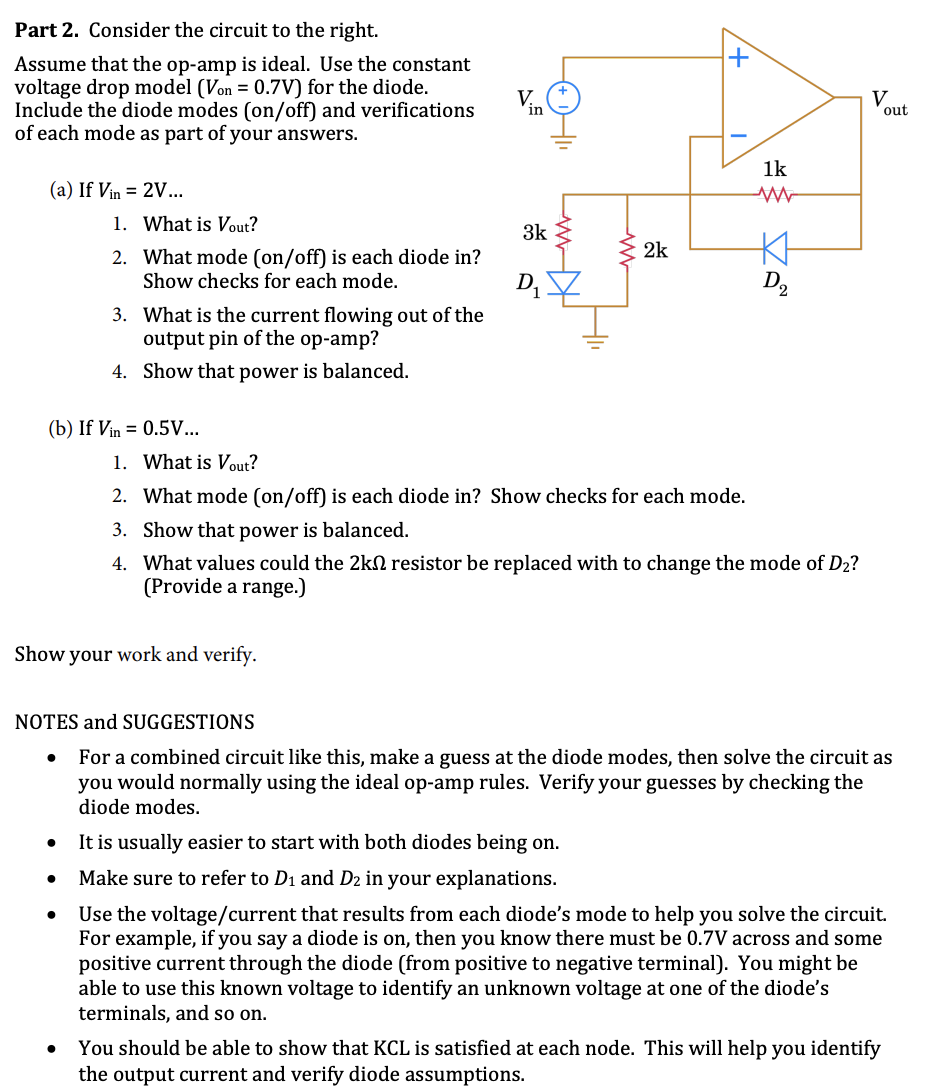Part 2. Consider the circuit to the right. + Assume that the op-amp is ideal. Use the constant voltage drop model (Von = 0.7V) for the diode. Include the diode modes (on/off) and verifications of each mode as part of your answers. V. in V out 1k (a) If Vin = 2V... 1. What is Vout? 3k 2k 2. What mode (on/off) is each diode in? Show checks for each mode. D2 3. What is the current flowing out of the output pin of the op-amp? 4. Show that power is balanced. (b) If Vin = 0.5V... 1. What is Vout? 2. What mode (on/off) is each diode in? Show checks for each mode. 3. Show that power is balanced. 4. What values could the 2kN resistor be replaced with to change the mode of D2? (Provide a range.)
KVL and KCL
KVL stands for Kirchhoff voltage law. KVL states that the total voltage drops around the loop in any closed electric circuit is equal to the sum of total voltage drop in the same closed loop.
Sign Convention
Science and technology incorporate some ideas and techniques of their own to understand a system skilfully and easily. These techniques are called conventions. For example: Sign conventions of mirrors are used to understand the phenomenon of reflection and refraction in an easier way.
Hello, I am looking for help on part B, please show that KCL is satisfied at nodes, as explained on the bottom, thanks in advance :)

Since you have posted a question with multiple subparts, we will solve the first three sub-parts for you. If you require to 4'th sub-part to be solved, then please re-post the question and mention that subpart.
According to the question, for the circuit shown below

we need to find

Trending now
This is a popular solution!
Step by step
Solved in 3 steps with 4 images









